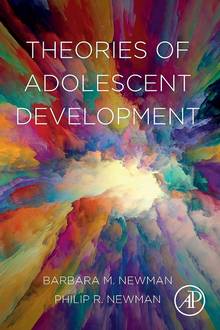Theories of Adolescent Development
Newman, Barbara M/ Newman, Philip R
Éditeur : ELSEVIER SCIENCE
ISBN papier: 9780128154502
Parution : 2020
Code produit : 1468887
Catégorisation :
Livres /
Sciences humaines /
Psychologie /
Psychologie de l'enfant et de l'adolescent
Formats disponibles
| Format | Qté. disp. | Prix* | Commander |
|---|---|---|---|
| Livre papier | En rupture de stock** |
Prix membre : 167,68 $ Prix non-membre : 176,50 $ |
*Les prix sont en dollars canadien. Taxes et frais de livraison en sus.
**Ce produits est en rupture de stock mais sera expédié dès qu'ils sera disponible.
Description
Adolescence is both universal and culturally constructed, resulting in diverse views about its defining characteristics. Theories of Adolescent Development brings together many theories surrounding this life stage in one comprehensive reference. It begins with an introduction to the nature of theory in the field of adolescence including an analysis of why there are so many theories in this field. The theory chapters are grouped into three sections: biological systems, psychological systems, and societal systems. Each chapter considers a family of theories including scope, assumptions, key concepts, contributions to the study of adolescence, approaches to measurement, applications, and a discussion of strengths and limitations of this family. A concluding chapter offers an integrative analysis, identifying five assumptions drawn from the theories that are essential guides for future research and application. Three questions provide a focus for comparison and contrast: How do the theories characterize the time and timing of adolescence? What do the theories emphasize as domains that are unfolding in movement toward maturity? Building on the perspective of Positive Youth Development, how do the theories differ in their views of developmental resources and conditions that may undermine development in adolescence?























